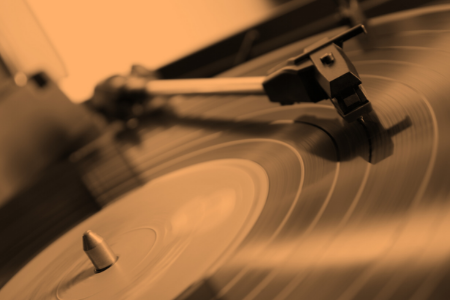You can hear it. You just can't play it.
It can be frustrating trying to get beyond those familiar pentatonic licks. Even if you learn a few Grant Green or Kenny Burrell moves, it can be tough to figure out how to actually fit them into what you already know. And if you've tried learning jazz scales or chords in the past, you know it doesn't always translate into better-sounding solos. Bebop For Beginners will show you how to change all that, and start bringing jazzier sounds into your blues.

A Simple, Blues-Based Way To Sound Jazzier

Authentic Sounds
Learn the four kinds of licks every jazz musician uses to play the blues

Just Three Scales
Learn the bebop scale, the altered sound, and how to mix them organically with the blues

A Vocabulary Of Licks
Learn how to drop new licks your solos smoothly and seamlessly
Learning Jazz Shouldn't Feel Like Homework
Playing the changes on the blues does take time and practice, but getting that jazz-blues sound shouldn't be a big mystery or take the rest of your life to accomplish. When I created my 50 Jazz Blues Licks course for Truefire, I spent over a year transcribing dozens of licks by my favorite Blue Note-era musicians to learn how jazz musicians play the blues. Now I've distilled those ideas down to the essentials, and in this workshop I'll show you the exact scales you need to know, the way you need to use them, and how to practice your new vocabulary to make it as intuitive to play as your favorite B.B. King licks.
HOW IT WORKS

Sign Up
Use the secure form below to sign up for and attend the workshop this Saturday (or watch the replay later)
Take The Workshop
Learn how to play the blues with jazz phrasing, use bebop scales and altered sounds, and practice playing the changes

Get That Jazz Blues Sound
Watch the replay for up to six months and transform your blues with authentic jazz sounds
Learn to play the changes on the blues
"How do I make my playing more interesting?" is probably the number one question most people have when it comes to single note blues soloing. Well, maybe number two, right after "is there room in this closet for one more guitar case?" As great as pentatonic scales sound, you can reach a place where it feels like you're playing the same things every time you solo. If you've heard people like Kenny Burrell or early George Benson play blues with a jazz angle, that can seem like the next logical step.
But the way jazz musicians play blues can be a lot harder to learn off of records than Albert Collins or Freddie King licks. And if you start looking for lessons on jazz in general, you can quickly get overwhelmed by the number of scales and arpeggios you're told you need to learn, and "in all twelve keys," too. There's nothing more frustrating than getting bogged down in Lydian scales and "The Girl From Ipanema" when you just want to add a little hip sophistication to your twelve-bar shuffles.
I don't think you should have to undertake years of study on a lot of things you don't care about just to make your blues more interesting. That's why Bebop For Beginners isn't about jazz in general. It's about just one thing: understanding how jazz musicians play the twelve bar blues.
Here's how it works: sign up to attend this weekend's live stream in real time (or watch the replay on your own schedule). I'll break down the jazz blues chord progression, explain the four kinds of licks jazz players use to play the blues, show you the three essential scales you need to create those licks, and give you a clear, organized way to practice everything in the workshop. You'll walk away knowing exactly how to get that jazz blues sound and what you need to practice to get there.
So sign up at the link below to get out of the pentatonic rut and start playing the blues like a certified jazz cat. No bossa novas required.


